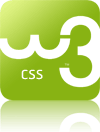--Double Click for screen size large or small
--code . // for open project from project folder terminal
or project tene ene cere dilei open hoye jabe
--Screencast Mode on from command pallete jodi shortcut
command calano show korte chaw
--settings.json file ta te nijer settings gulo add kore dewa
--install fira code form google and font familly te fira code use korbo
--theme: andromeda, dracula, community material theme
--plugin: vscode icons for icons, live server, auto rename tag, path autocomplete, Turbo Console Log,
ESLint, Prettier - Code formatter, ES7 React/Redux/GraphQL/React-Native snippets, emoji = for fun purpose
Turbo Consloe Log, PHP IntelliSense, PHP Intelephense, code runner, phpfmt
--linting and code formatting
--User Snippet/Create Shortcut
--File->Preference->User Snippet
--Multiple Cursor
--CTRL+SHIFT+L, CTRL+D(Navigate Kora)
--Hyper Terminal (Extension)
--Material Icon Theme
--One Dark Pro Theme
--Font Size Access orthat choto boro kora
--Setting theke font size
--Setting theke Mouse Wheel Zoom
--Font Zoom Reset
--ctrl+shift+p --> font zoom reset
--Keybinding
--file+preferences+keyboard shortcuts
--Add shortcut or remove shortcut
--Moves line
--alt+up/down key press
--Minimap
--Active minimap from settings
--Splitting Editor
--split+up/down
--split right/left
--Qucikly Access Tab Navigate
--ctrl+ tab navigate number such as 1, 2, 3
--Qucikly Created Nested Folder
--Using Multiple Cursors:
--alt+select specific text
--Qucikly Increment/Decrement
--Set increment/decrement by keyboard shortcut
--Opeing files in new Tab:
--Uncheck workbeance enable preview from settings
--Access Integrated Terminal:
--Formatter
--ALT+SHIFT+F
--phpfmt extension for format
--Php extension for Developers:
--PHP IntelliSense
--PHP Intelephense
--Instantly Run Code:
--code runner extension
--Snippet
--snippet-creator
--create snippet
Keyboard Shortcuts:
Copy:
--SHIFT+ALT+DOWNARROW //COPY LINE DOWN
--SHIFT+ALT+UPARROW //COPY LINE UP
--CTRL+D //DUPLICATE SELECTION
Turbo Consloe Log (After Installed This Extension)
--CTRL+ALT+L //Add Console Log Multiple Row
--SHIFT+ALT+D //Delete Console Log Multiple Row
--SHIFT+ALT+C //Comment Console Log Multiple Row
--SHIFT+ALT+U //Uncomment Console.Log Multiple Row
Quickly Access File:
--CTRL+HOME or HOME
--CTRL+END or END
--CTRL+N //NEW FILE
--CTRL+W CTRL+W //CLOSE ALL
--CTRL+F4 //CLOSE
--CTRL+SHIFT+T //REOPEND CLOSED EDITOR
--CTRL+, //SETTINGS
--CTRL+H //REPLACE
--CTRL+SHIFT+P //COMMAND PALETTE
--CTRL+P //QUICK OPEN, GO TO FILE
--CTRL+B //TOGGLE SIDEBAR VISIBILITY
--CTRL+G //GO TO LINE
--CTRL+TAB //OPEN NEXT
--CTRL+SHIFT+TAB //OPEN PREVIOUS
--CTRL+SHIFT+O //GO TO SYMBOL
Cheeat Sheet:
https://code.visualstudio.com/shortcuts/keyboard-shortcuts-windows.pdf


